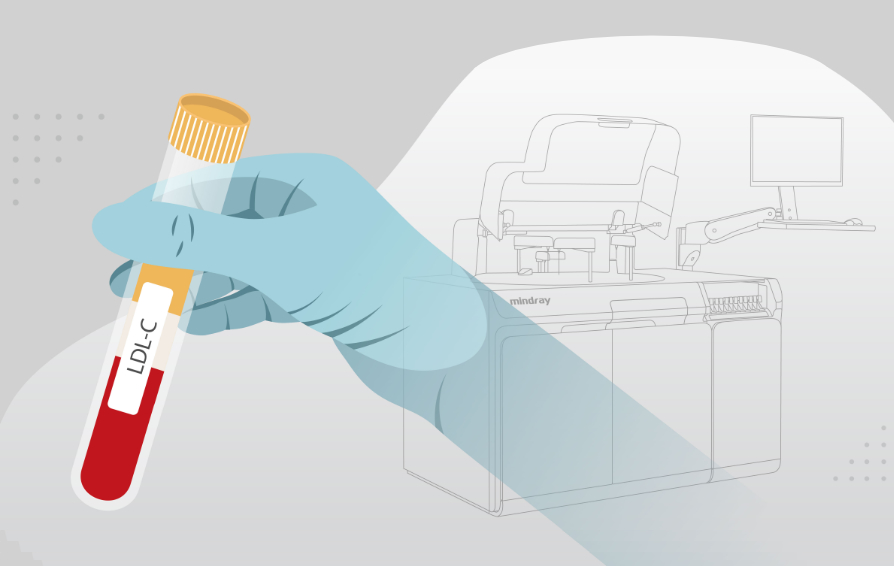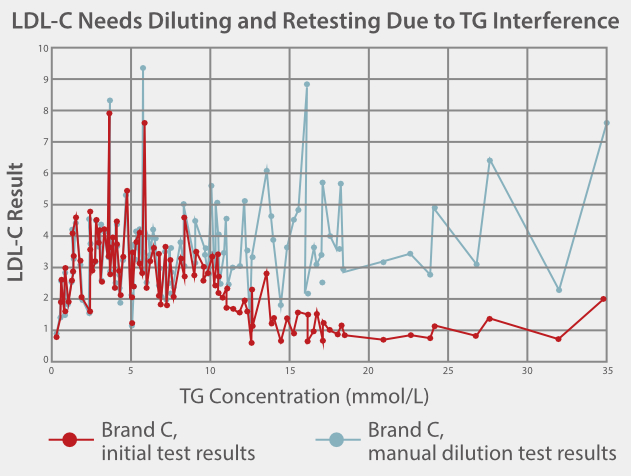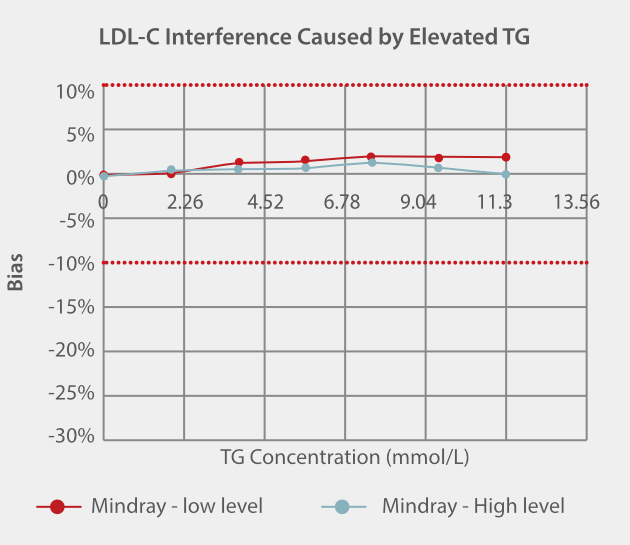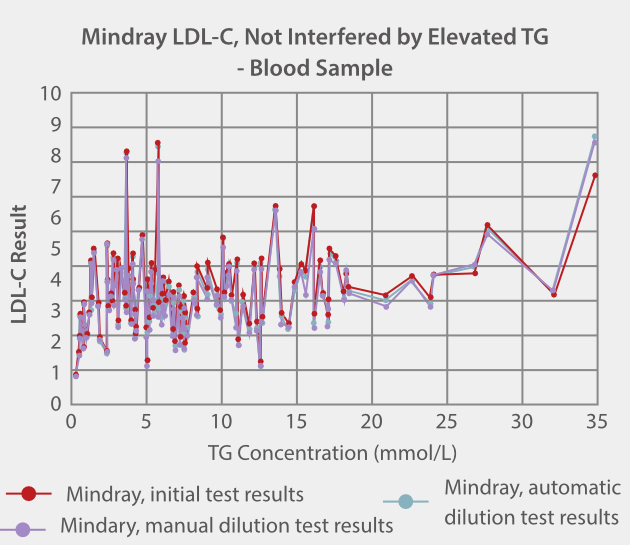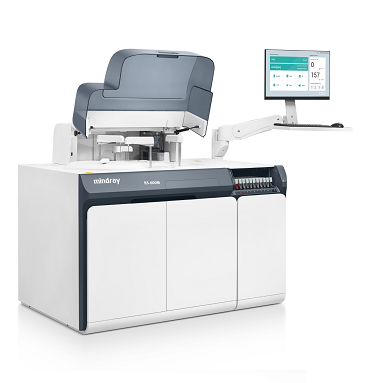The disturbance of lipid metabolism can trigger a series of pathological changes in blood vessels, such as atherosclerosis. As a lipid component, low density lipoprotein - cholesterol (LDL-C) can cause cholesterol deposits in blood vessels through multiple pathophysiological mechanisms. It has been repeatedly demonstrated that LDL-C causes atherosclerotic disease.
LDL-C is wildly used in the screening auxiliary diagnosis, risk stratification, primary and secondary prevention and therapeutic assessment of individuals with vascular risk factors and diagnosed with atherosclerotic disease. LDL-C has also been recommended by many medical guidelines as a treatment goal, such as statin treatment. [1, 2]
Hypertriglyceridemia (triglyceride (TG) concentration elevated to 1.695 mmol/L and higher) is quite common worldwide. Its global prevalence is reported to be approximately 30%.[3] Unfortunately, increased TG particles can interfere with biochemical spectrophotometric testing, include LDL-C testing.

There is also a known association between LDL-C and atherogenic dyslipidemia (e.g., hypertriglyceridemia is frequently associated with a higher concentration of LDL-C particles), making LDL-C testing more frequently interfered by hypertriglyceridemia. [3] Such interference is quite common in many biochemical testing systems.

Therefore, lab technicians have to identify and dilute hypertriglyceridemic samples after the initial LDL-C testing. Afterwards, they have to retest the diluted samples to get the actual test results. Such dilution and retesting procedure is very complicated and time-consuming. According to statistics, it takes an average of 20 minutes to dilute and retest one sample with TG interference.
To solve this issue, Mindray has designed a pioneering reagent formula with multiple surfactants, which can dissolve TG particles while ensuring specificity and high reaction stability.
Mindray LDL-C is free from interference even when the TG concentration reaches 11.3 mmol/L, and this concentration covers 99.59% of all samples intended for LDL-C testing. Due to the high anti-interference capacity, Mindray LDL-C testing can significantly save the turnaround time and minimize the need for manual intervention by lab technicians.
Mindray provides reliable LDL-C testing with a high anti-interference capacity against hypertriglyceridemia. Mindray LDL-C and the other parameters in our lipid panel give thorough information about lipid metabolism, which facilitates precise lipid-lowering treatment that benefits individuals with vascular risk factors.
References
1. The Task Force for the management of dyslipidaemias of the European Society of Cardiology (ESC) and European Atherosclerosis Society (EAS). 2019 ESC/EAS Guidelines for the management of dyslipidaemias: lipid modification to reduce cardiovascular risk, European Heart Journal, 41 (1) 111–188; https://doi.org/10.1093/eurheartj/ehz455
2. ACC/AHA lipid guidelines: Personalized care to prevent cardiovascular disease. Cleveland Clinic Journal of Medicine. 87 (4) 231-239; DOI: 10.3949/ccjm.87a.19078
3. Pirillo, A., Casula, M., Olmastroni, E. et al. Global epidemiology of dyslipidaemias. Nature Reviews Cardiology 18, 689–700 (2021). https://doi.org/10.1038/s41569-021-00541-4
